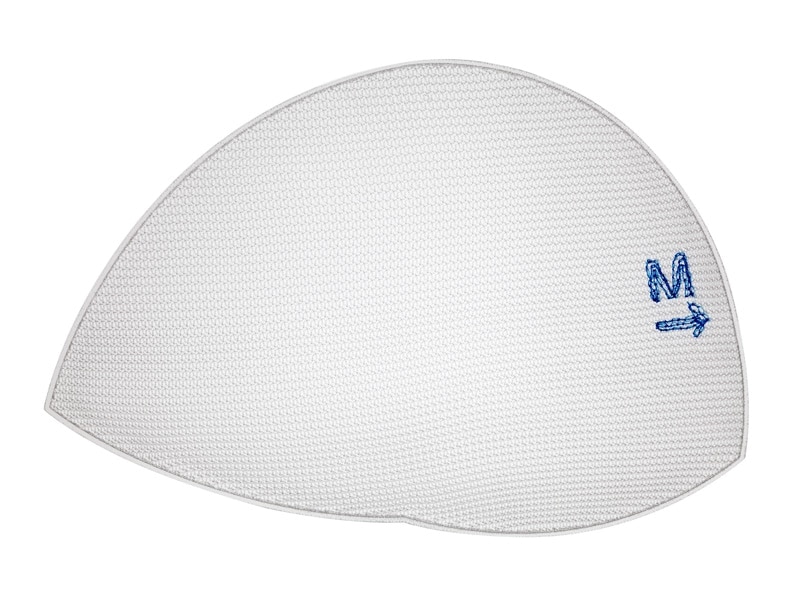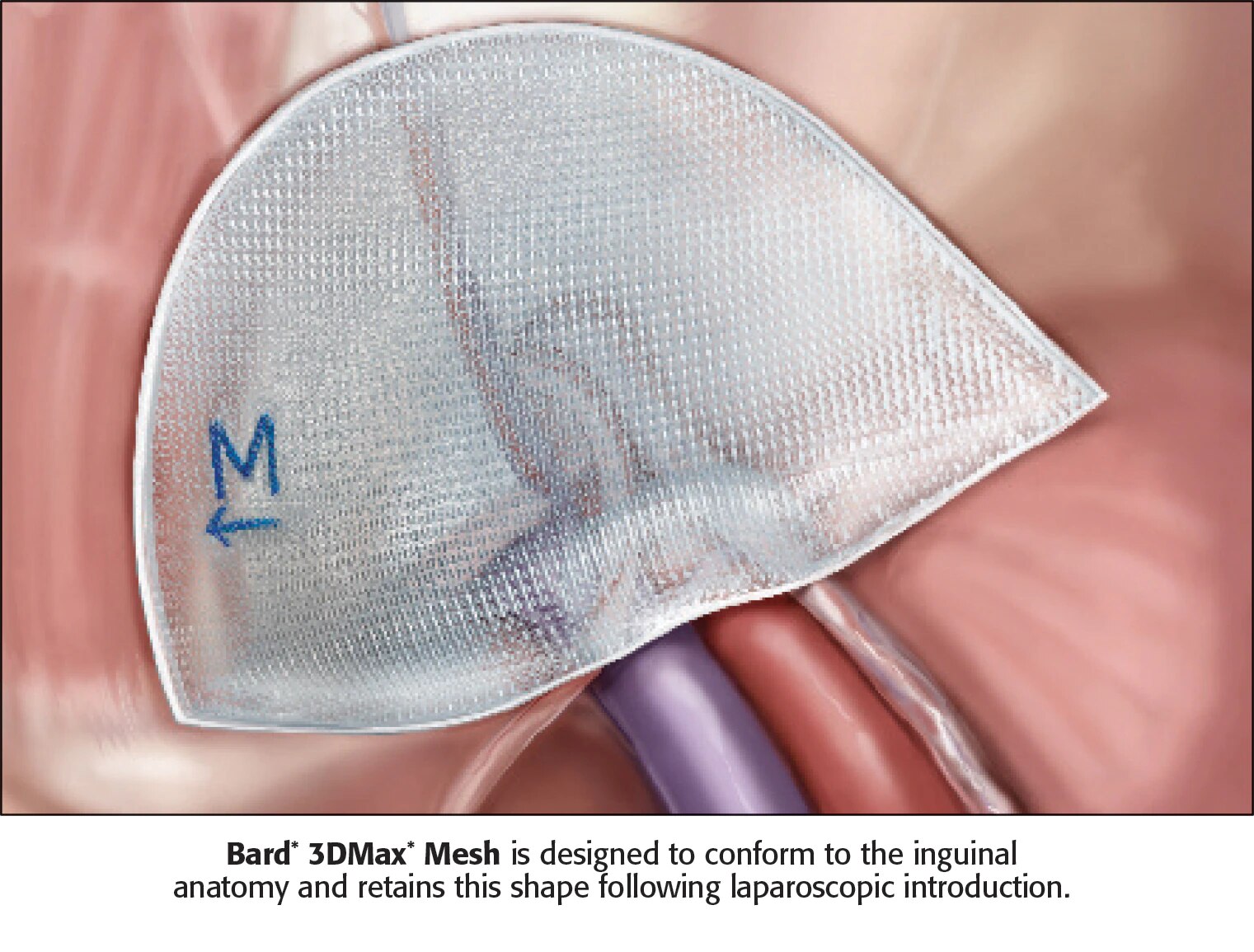1. Bell, Price. “Laparoscopic Inguinal Hernia Repair Using an Anatomically Contoured Three-Dimensional Mesh.” Surgical Endoscopy. 2003:17:1784-1788.
2. Koch et al. “Randomized Prospective Study of Totally Extraperitoneal Inguinal Hernia Repair: Fixation Versus No Fixation of Mesh.” Journal of the Society of Laparoendoscopic Surgeons. 2006:10:457-460.
Indications
Bard 3DMax™ mesh is indicated to reinforce soft tissue where weakness exists, e.g., for repair of hernia and chest wall defects.
Contraindications
Literature reports that there may be a possibility for adhesion formation when Bard 3DMax™ mesh is placed in direct contact with the bowel or viscera.
Do not use Bard 3DMax™ mesh in infants and children, whereby future growth will be compromised by use of such material.
Warnings
The use of any permanent mesh or patch in a contaminated or infected wound could lead to fistula formation and/or extrusion of the prosthesis.
If an infection develops, treat the infection aggressively. Consideration should be given regarding the need to remove the mesh. An unresolved infection may require removal of the device.
Precautions
Do not cut or reshape the Bard 3DMax™mesh as this may affect its effectiveness.
If fixation is used, care should be taken to ensure that the mesh is adequately fixated to the abdominal wall. If necessary, additional fasteners and/or sutures should be used.
If sutures are used to secure the mesh in place, nonabsorbable monofilament sutures are recommended.
Adverse Reactions
Possible complications include seromas, adhesions, hematomas, inflammation, extrusion, fistula formation and recurrence of the hernia or soft tissue defect.
Please consult package insert for more detailed safety information and instructions for use.


